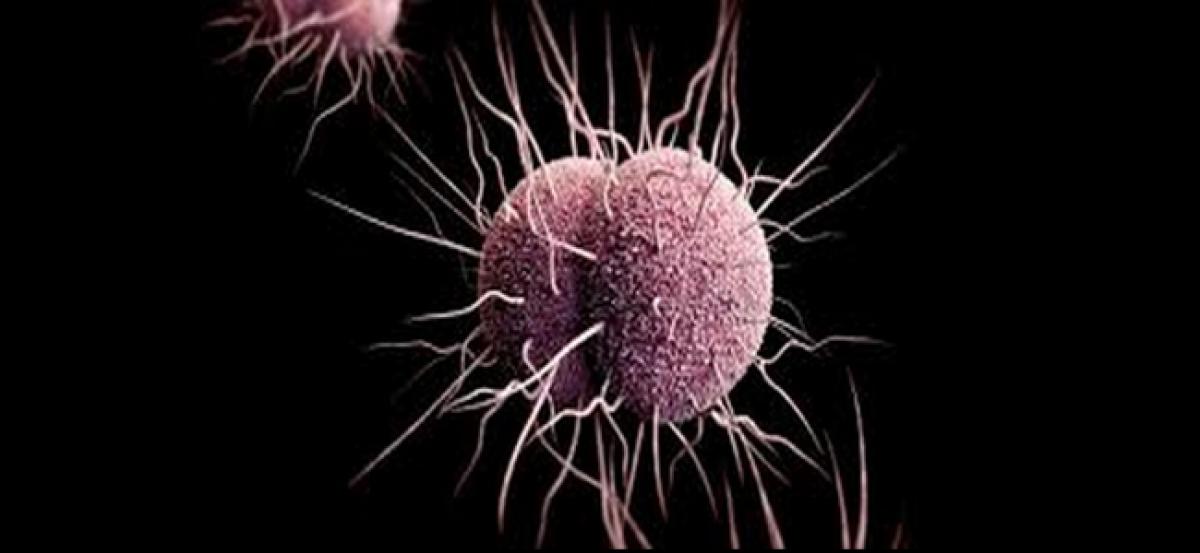Live
- Udupi MLA calls for joint survey to address parking issues
- Villages choke on chemical fumes
- 19 agritech soonicorns, 40 minicorns embracing emerging tech for biz growth: RBI paper
- Leopard rescued from well released into forest
- TDP Urges Centre for debate on key issues of AP in winter session
- Maharashtra trusted us, not Oppn's divisive politics: Shiv Sena leader
- Jordan Cox ruled out of England's Test series in New Zealand due to a broken thumb
- BUDA Commissioner and member arrested
- Tender to be called for new gates to TB dam in January
- TTD EO inspects Tiruchanoor Brahmotsavam arrangements
Just In

Gender matters when it comes to gonorrhoea since symptoms in men are more prominent than in women.
Washington DC, [USA]: Gender matters when it comes to gonorrhoea since symptoms in men are more prominent than in women.
A recent study by researchers from Tufts University School of Medicine conducted the first full comparison of gonococcal gene expression and regulation in both men and women infected with Neisseria Gonorrhoeae, thereby identifying gender-specific signatures in infection and in antibiotic resistance genes.
In the last decade, however, there has been an emergence of strains of antimicrobial-resistant N. Gonorrhoea, the bacterial pathogen responsible for gonorrhoea.
In 2013, N. Gonorrhoeae was announced as a public health threat.
The World Health Organization estimates that 78 million people worldwide are infected with gonorrhea each year. Men with infections tend to have obvious symptoms while women are often asymptomatic or experience mild symptoms. In both men and women, the infection usually clears with antibiotic treatment.
"We built on our earlier work on gene expression during infection in females to include both genders in the present analysis, so we see for the first time the expression profiles during active disease in males and their asymptomatic partners," said a researcher, Caroline A. Genco.
"We found that when the bacteria are infecting the male, it's a different gene expression profile compared to when they are infecting the female. When you consider how fundamentally different the two host environments are, this makes sense," she added.
Until now, the infection has been primarily studied in tissue culture, male human models, and mice. These studies have provided some key information on interactions between the bacteria and the host since according to Genco "they have important limitations, namely the absence of the female response in humans".
"Studying active, natural infection in both men and women is critical to developing strategies to treat and prevent infection."
To understand the disease in both genders, the team of researchers looked at the disease manifestation in a cohort of subjects attending a clinic that treats sexually transmitted infections in a country where there are high rates of gonorrhoea and antibiotic resistance.
Specimens were collected from males who went to the clinic for treatment for gonorrhoea and from the female partners who came in for treatment following confirmation of their partner's diagnosis.
The researchers used RNA-sequencing to identify the host and bacterial genes which are expressed during mucosal infection.
The analysis revealed that nine percent of gonococcal genes showed increased expression exclusively in men and included genes involved in host immune cell interactions. Four percent of genes showed increased expression exclusively in women and included phage-associated genes.
In whole genome DNA sequencing, men and women displayed similar antibiotic-resistant genotypes, but researchers observed an expression of these antibiotic-resistant genes four times higher in men.
The researchers finally noted that limitations include the small sample size and the potential variance in stages of infection in the male subjects compared to the female.
A larger-scale study employing additional genetic analysis is now underway.
The study appears in mSphere journal.

© 2024 Hyderabad Media House Limited/The Hans India. All rights reserved. Powered by hocalwire.com







